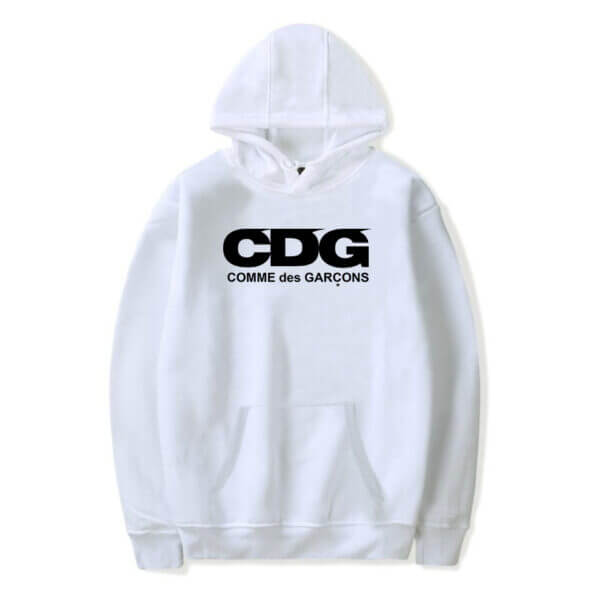
In a fashion world often defined by tradition, beauty, and predictability, Comme des Garçons emerged as a rebellious force. Founded by Rei Kawakubo in Tokyo in 1969 and formally established in 1973, Comme des Garçons (commonly abbreviated as CdG) has since evolved into one of the most influential and avant-garde luxury fashion brands in the world.
Unlike conventional luxury labels that focus on opulence and status,commedesgarconco.com is driven by artistic innovation, conceptual design, and a willingness to challenge norms. Whether you’re familiar with its signature heart logo from the Play line or you’ve seen its dramatic runway presentations at Paris Fashion Week, Comme des Garçons is a name that has transcended fashion and become a cultural phenomenon.
1. The Origins of a Fashion Revolutionary
Comme des Garçons, which translates from French to “like the boys,” was founded by Rei Kawakubo—an art student turned fashion visionary. Her early work was defined by minimalist color palettes, asymmetrical tailoring, and an exploration of shape over traditional form. From the beginning, the brand stood in stark contrast to European luxury houses rooted in elegance and conformity.
In the early 1980s, Kawakubo brought Comme des Garçons to Paris, launching a seismic shift in fashion with her 1981 debut. The collection was predominantly black, filled with torn fabrics, deconstructionist cuts, and irregular silhouettes—earning nicknames like “Hiroshima chic.” Critics were stunned; audiences were divided. But it was clear: fashion would never be the same.
2. Philosophy Over Flash
What sets Comme des Garçons apart from traditional luxury labels like Chanel or Louis Vuitton is that it’s not about showing off wealth or chasing seasonal trends. At its core, CdG is conceptual fashion—an extension of art, identity, and resistance.
Rei Kawakubo’s philosophy includes:
-
“The new is not always beautiful” – CdG often rejects typical notions of beauty in favor of the thought-provoking.
-
Deconstruction – Many pieces are unfinished, asymmetric, or layered in unexpected ways.
-
Anti-fashion – A stance against consumerism and the idea that fashion should cater to mass tastes.
This philosophical foundation has made Comme des Garçons a favorite among fashion purists, intellectuals, and those who see clothing as more than just appearance—it’s communication.
3. The Comme des Garçons Universe: More Than a Brand
One of the most unique things about CdG is its multiverse of sub-labels, each with its own tone, audience, and creative direction. This model has allowed the brand to remain relevant across generations and demographics.
Key Lines Under the CdG Umbrella:
-
Comme des Garçons Homme / Homme Plus: Menswear lines known for their tailoring, pattern play, and reimagination of menswear codes.
-
Comme des Garçons Shirt: A playful take on shirts and casualwear, often featuring graphics and bold colors.
-
Comme des Garçons Play: The most commercially successful line, famous for its heart-with-eyes logo, often found on T-shirts, hoodies, and Converse sneakers.
-
Comme des Garçons Noir, Tricot, and Junya Watanabe: Sub-labels with independent creative teams, each contributing to the brand’s richness and variety.
This layered structure ensures that while CdG remains elite and avant-garde, it also offers accessible luxury through lines like Play, expanding its reach globally.
4. Influence in High Fashion
Comme des Garçons is not just a brand—it’s a school of thought that has influenced countless designers and artists. Names like Yohji Yamamoto, Martin Margiela, Demna Gvasalia (Balenciaga), and even Virgil Abloh have cited Rei Kawakubo as a major influence.
In 2017, Kawakubo became only the second living designer to be honored with a solo exhibition at the Metropolitan Museum of Art’s Costume Institute (the first being Yves Saint Laurent). The exhibit, “Rei Kawakubo/Comme des Garçons: Art of the In-Between,” celebrated her ability to challenge form, gender, and aesthetics.
This cemented CdG not just as a fashion brand, but as a cultural institution.
5. Collaborations: From High Art to Street Culture
Another reason Comme des Garçons has remained at the forefront of fashion is its ability to collaborate across genres—from luxury fashion to youth culture.
Notable Collaborations:
-
Converse x Comme des Garçons Play: A cult classic, instantly recognizable and still highly popular.
-
Nike x CdG: Sneakers infused with avant-garde edge.
-
Supreme x CdG: Merged streetwear hype with high fashion.
-
Gucci x Comme des Garçons: A limited-edition tote that brought together two giants from opposite ends of the luxury spectrum.
These partnerships maintain CdG’s edge while also keeping the brand fresh and accessible to younger audiences.
6. The Comme des Garçons Retail Experience
Shopping at Comme des Garçons is unlike entering any typical luxury boutique. Many of the brand’s flagship stores, especially the iconic Dover Street Market (founded by Rei Kawakubo and her husband Adrian Joffe), are curated fashion worlds—part boutique, part gallery.
Dover Street Market houses brands like Gucci, Balenciaga, and Rick Owens alongside CdG collections, art installations, and exclusive drops. This blend of commerce and creativity is a perfect reflection of Comme des Garçons’ brand ethos.
7. Who Wears Comme des Garçons?
Comme des Garçons is worn by a diverse crowd:
-
Fashion insiders and editors
-
Celebrities like Rihanna, Kanye West, and Frank Ocean
-
Artists, architects, and designers
-
Streetwear fans rocking CdG Play hoodies and sneakers
What unites them is a desire to stand out, to challenge norms, and to express individuality through clothing. Whether it’s an $800 deconstructed coat or a $150 Play T-shirt, each piece is a statement of intent.
8. Final Thoughts: A Luxury Brand That Refuses to Conform
In the world of luxury fashion, where many esentialshoodieco.us brands lean on tradition and commercial appeal, Comme des Garçons stands defiantly apart. It is intellectual, confrontational, and unapologetically original.
More than just a name, Comme des Garçons represents a movement—a challenge to fashion’s status quo. Whether through its avant-garde runway shows or its best-selling collaborations, the brand proves that luxury can be innovative, inclusive, and disruptive.